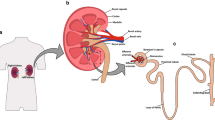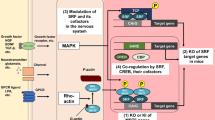Abstract
Ochratoxin A (OTA) is a widely studied compound due to its role in renal toxicity and carcinogenicity. However, there is still no consensus on the exact mechanisms of toxicity or carcinogenicity. In the current study, we analysed the effect of OTA on three human renal proximal tubular models (human primary, RPTEC/TERT1 and HK-2 cells) and two rat renal proximal tubular models (rat primary and NRK-52E cells). Global transcriptomics analysis at two exposure times was performed to generate a set of 756 OTA sensitive genes. This gene set was then compared in more detail across all models and additionally to a rat in vivo renal cortex model. The results demonstrate a well-conserved response across all models. OTA resulted in deregulation of a number of pathways including cytoskeleton, nucleosome regulation, translation, transcription, ubiquitination and cell cycle pathways. Interestingly, the oxidative stress activated Nrf2 pathway was not enriched. These results point to an epigenetic action of OTA, perhaps initiated by actin binding as the actin remodelling gene, advillin was the highest up-regulated in all models. The largest model differences were observed between the human and the rat in vitro models. However, since the human in vitro models were more similar to the rat in vivo model, it is more likely that these differences are model-specific rather than species-specific per se. This study demonstrates the usefulness of in vitro cell culture models combined with transcriptomic analysis for the investigation of mechanisms of toxicity and carcinogenicity. In addition, these results provide further evidence supporting a non-genotoxic mechanism of OTA-induced carcinogenicity.

Similar content being viewed by others
References
Aydin S, Signorelli S, Lechleitner T et al (2008) Influence of microvascular endothelial cells on transcriptional regulation of proximal tubular epithelial cells. Am J Physiol Cell Physiol 294(2):C543–C554. doi:10.1152/ajpcell.00307.2007
Boesch-Saadatmandi C, Wagner AE, Graeser AC, Hundhausen C, Wolffram S, Rimbach G (2009) Ochratoxin A impairs Nrf2-dependent gene expression in porcine kidney tubulus cells. J Anim Physiol Anim Nutr (Berl) 93(5):547–554. doi:10.1111/j.1439-0396.2008.00838.x
Boorman GA, McDonald MR, Imoto S, Persing R (1992) Renal lesions induced by ochratoxin A exposure in the F344 rat. Toxicol Pathol 20(2):236–245
Cavin C, Delatour T, Marin-Kuan M et al (2007) Reduction in antioxidant defenses may contribute to ochratoxin A toxicity and carcinogenicity. Toxicol Sci 96(1):30–39. doi:10.1093/toxsci/kfl169
Chang B, Chen Y, Zhao Y, Bruick RK (2007) JMJD6 is a histone arginine demethylase. Science 318(5849):444–447. doi:10.1126/science.1145801
Clark HA, Snedeker SM (2006) Ochratoxin A: its cancer risk and potential for exposure. J Toxicol Environ Health B Crit Rev 9(3):265–296. doi:10.1080/15287390500195570
Creppy EE, Roschenthaler R, Dirheimer G (1984) Inhibition of protein synthesis in mice by ochratoxin A and its prevention by phenylalanine. Food Chem Toxicol 22(11):883–886
Creppy EE, Chakor K, Fisher MJ, Dirheimer G (1990) The myocotoxin ochratoxin A is a substrate for phenylalanine hydroxylase in isolated rat hepatocytes and in vivo. Arch Toxicol 64(4):279–284
Czakai K, Muller K, Mosesso P et al (2011) Perturbation of mitosis through inhibition of histone acetyltransferases: the key to ochratoxin A toxicity and carcinogenicity? Toxicol Sci. doi:10.1093/toxsci/kfr110
Dirheimer G, Creppy EE (1991) Mechanism of action of ochratoxin A. IARC Sci Publ 115:171–186
Dopp E, Muller J, Hahnel C, Schiffmann D (1999) Induction of genotoxic effects and modulation of the intracellular calcium level in Syrian hamster embryo (SHE) fibroblasts caused by ochratoxin A. Food Chem Toxicol 37(7):713–721
Gautier JC, Holzhaeuser D, Markovic J, Gremaud E, Schilter B, Turesky RJ (2001) Oxidative damage and stress response from ochratoxin a exposure in rats. Free Radic Biol Med 30(10):1089–1098
Jennings P, Aydin S, Bennett J et al (2009) Inter-laboratory comparison of human renal proximal tubule (HK-2) transcriptome alterations due to Cyclosporine A exposure and medium exhaustion. Toxicol In Vitro 23(3):486–499. doi:10.1016/j.tiv.2008.12.023
Kamp HG, Eisenbrand G, Janzowski C et al (2005a) Ochratoxin A induces oxidative DNA damage in liver and kidney after oral dosing to rats. Mol Nutr Food Res 49(12):1160–1167. doi:10.1002/mnfr.200500124
Kamp HG, Eisenbrand G, Schlatter J, Wurth K, Janzowski C (2005b) Ochratoxin A: induction of (oxidative) DNA damage, cytotoxicity and apoptosis in mammalian cell lines and primary cells. Toxicology 206(3):413–425. doi:10.1016/j.tox.2004.08.004
Luhe A, Hildebrand H, Bach U, Dingermann T, Ahr HJ (2003) A new approach to studying ochratoxin A (OTA)-induced nephrotoxicity: expression profiling in vivo and in vitro employing cDNA microarrays. Toxicol Sci 73(2):315–328. doi:10.1093/toxsci/kfg073
Mally A, Dekant W (2009) Mycotoxins and the kidney: modes of action for renal tumor formation by ochratoxin A in rodents. Mol Nutr Food Res 53(4):467–478. doi:10.1002/mnfr.200800149
Marin-Kuan M, Nestler S, Verguet C et al (2006) A toxicogenomics approach to identify new plausible epigenetic mechanisms of ochratoxin a carcinogenicity in rat. Toxicol Sci 89(1):120–134. doi:10.1093/toxsci/kfj017
Marin-Kuan M, Nestler S, Verguet C et al (2007) MAPK-ERK activation in kidney of male rats chronically fed ochratoxin A at a dose causing a significant incidence of renal carcinoma. Toxicol Appl Pharmacol 224(2):174–181. doi:10.1016/j.taap.2007.06.014
Marin-Kuan M, Cavin C, Delatour T, Schilter B (2008) Ochratoxin A carcinogenicity involves a complex network of epigenetic mechanisms. Toxicon 52(2):195–202. doi:10.1016/j.toxicon.2008.04.166
Marks PW, Arai M, Bandura JL, Kwiatkowski DJ (1998) Advillin (p92): a new member of the gelsolin/villin family of actin regulatory proteins. J Cell Sci 111(Pt 15):2129–2136
NTP (1989) Toxicology and carcinogenesis studies of ochratoxin A in F344/N rats (gavage studies). Natl Toxicol Program Tech Rep Ser 358:1–142
Petrik J, Zanic-Grubisic T, Barisic K et al (2003) Apoptosis and oxidative stress induced by ochratoxin A in rat kidney. Arch Toxicol 77(12):685–693. doi:10.1007/s00204-003-0501-8
Preuss U, Landsberg G, Scheidtmann KH (2003) Novel mitosis-specific phosphorylation of histone H3 at Thr11 mediated by Dlk/ZIP kinase. Nucleic Acids Res 31(3):878–885
Rached E, Pfeiffer E, Dekant W, Mally A (2006) Ochratoxin A: apoptosis and aberrant exit from mitosis due to perturbation of microtubule dynamics? Toxicol Sci 92(1):78–86. doi:10.1093/toxsci/kfj213
Rizkallah R, Alexander KE, Kassardjian A, Lüscher B, Hurt MM (2011) The transcription factor YY1 Is a substrate for polo-like kinase 1 at the G2/M transition of the cell cycle. PLoS ONE 6(1):e15928
Sarkar S, Roy BC, Hatano N, Aoyagi T, Gohji K, Kiyama R (2002) A novel ankyrin repeat-containing gene (Kank) located at 9p24 is a growth suppressor of renal cell carcinoma. J Biol Chem 277(39):36585–36591. doi:10.1074/jbc.M204244200
SCOOP (2002) Reports on tasks for scientific cooperation: assessment of dietary intake of ochratoxin A by the population of EU member states. http://eceuropaeu/food/fs/scoop/327_enpdf
Silacci P, Mazzolai L, Gauci C, Stergiopulos N, Yin HL, Hayoz D (2004) Gelsolin superfamily proteins: key regulators of cellular functions. Cell Mol Life Sci 61(19–20):2614–2623. doi:10.1007/s00018-004-4225-6
Sun Z, Chin YE, Zhang DD (2009) Acetylation of Nrf2 by p300/CBP augments promoter-specific DNA binding of Nrf2 during the antioxidant response. Mol Cell Biol 29(10):2658–2672. doi:10.1128/MCB.01639-08
Turesky RJ (2005) Perspective: ochratoxin A is not a genotoxic carcinogen. Chem Res Toxicol 18(7):1082–1090. doi:10.1021/tx050076e
Wang Y, Kakinuma N, Zhu Y, Kiyama R (2006) Nucleo-cytoplasmic shuttling of human Kank protein accompanies intracellular translocation of beta-catenin. J Cell Sci 119(Pt 19):4002–4010. doi:10.1242/jcs.03169
Weiland C, Ahr HJ, Vohr HW, Ellinger-Ziegelbauer H (2007) Characterization of primary rat proximal tubular cells by gene expression analysis. Toxicol In Vitro 21(3):466–491. doi:10.1016/j.tiv.2006.10.008
Wieser M, Stadler G, Jennings P et al (2008) hTERT alone immortalizes epithelial cells of renal proximal tubules without changing their functional characteristics. Am J Physiol Renal Physiol 295(5):F1365–F1375. doi:10.1152/ajprenal.90405.2008
Wilmes A, Crean D, Aydin S, Pfaller W, Jennings P, Leonard MO (2011) Identification and dissection of the Nrf2 mediated oxidative stress pathway in human renal proximal tubule toxicity. Toxicol In Vitro 25(3):613–622. doi:10.1016/j.tiv.2010.12.009
Wright GW, Simon RM (2003) A random variance model for detection of differential gene expression in small microarray experiments. Bioinformatics 19(18):2448–2455
Zlender V, Breljak D, Ljubojevic M et al (2009) Low doses of ochratoxin A upregulate the protein expression of organic anion transporters Oat1, Oat2, Oat3 and Oat5 in rat kidney cortex. Toxicol Appl Pharmacol 239(3):284–296. doi:10.1016/j.taap.2009.06.008
Author information
Authors and Affiliations
Corresponding author
Electronic supplementary material
Below is the link to the electronic supplementary material.
Rights and permissions
About this article
Cite this article
Jennings, P., Weiland, C., Limonciel, A. et al. Transcriptomic alterations induced by Ochratoxin A in rat and human renal proximal tubular in vitro models and comparison to a rat in vivo model. Arch Toxicol 86, 571–589 (2012). https://doi.org/10.1007/s00204-011-0780-4
Received:
Accepted:
Published:
Issue Date:
DOI: https://doi.org/10.1007/s00204-011-0780-4




